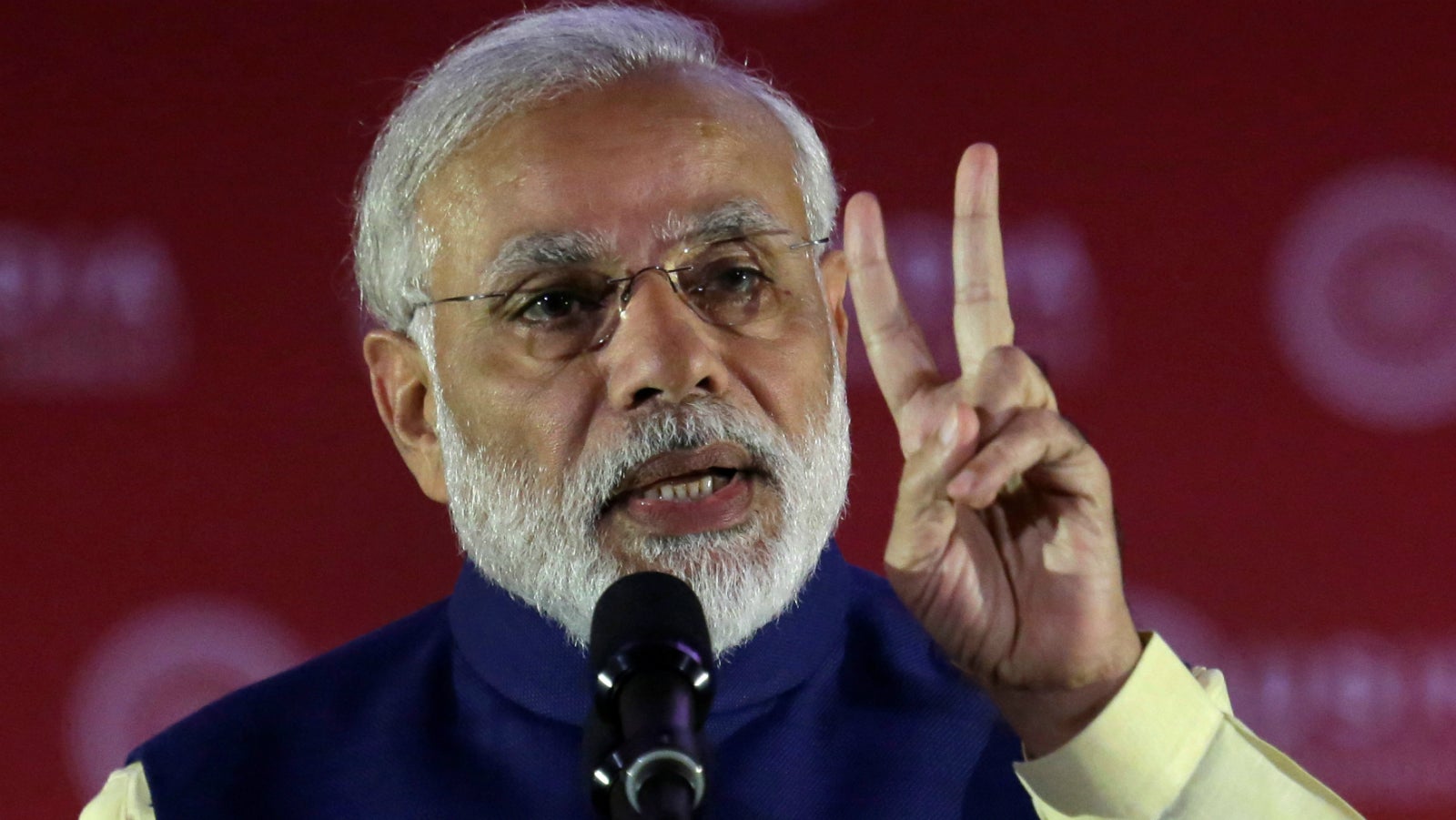India has passed its biggest tax reform in 70 years—time for Narendra Modi to deliver
Indian lawmakers have finally passed the country’s biggest tax reform since 1947.


Indian lawmakers have finally passed the country’s biggest tax reform since 1947.
Late on Aug. 03, lawmakers in Asia’s third largest economy passed the Constitution (122nd Amendment) Bill, 2014, which would allow the roll-out of the much-awaited Goods and Services Tax (GST). The GST will replace at least 17 state and federal taxes and bring them under one unified tax structure.
The GST was first mooted in 2000, and the idea is to help create a single national market, unlike now, where state and central governments put in place multiple layers of taxation. That has made doing business in the country cumbersome. The new tax is now expected to add up to two percentage points to India’s GDP, currently the fastest growing large economy in the world.
India’s tax system has for decades consisted of several layers of indirect taxes, which add between 25% and 40% to the cost of goods and services. The government is yet to announce the GST rate, but various news reports peg it at between 15% and 18%. The GST will, however not include taxes on petroleum products, electricity duties, excise duty on alcohol, and stamp duty on immovable property. These goods provide substantial revenues to state governments.
The Narendra Modi government wants to roll out the GST by April 2017, when the new financial year starts. ”It’s a proposal which eminently requires a unanimity and overwhelming consensus. Our effort has been to avoid a split as far as possible,” India’s finance minister, Arun Jaitley said today (Aug. 03).
Long process
But, in the next eight months, Jaitley and the government has some serious work to do.
At least half of the states in the country have to ratify the bill, following which it has to be once again introduced in the parliament, most likely by November this year. By then, the fine-print of its structure—comprising a central GST and a state GST—have to be laid out.
The approval of the bill today came after Modi’s government was pushed on the back foot, and was forced to make four broad amendments to the earlier bill. These include getting rid of a 1% tax that the centre was to levy on inter-state trade and compensating the states for the loss they would incur once the GST came into effect. It also includes a mechanism to adjudicate any dispute within the GST council, a body that will comprise members from the central and state government.
Boost to reform
The passage of the bill will also boost to the reform agenda of the Modi government, which has struggled to bring about an extensive overhauling of the economy as he had promised before the election.
“Two years into the Modi administration, many US policymakers and stakeholders are concerned that neither the Indian government’s rhetoric nor bilateral engagement has led to substantial, sustained economic reforms in India, superseding earlier optimism about the likelihood of expanding Indo-US commercial ties,” a report by US Congress’ research wing said in June this year.
The GST, though, will give Modi the much-needed impetus to kickstart those reforms.